Can’t Stop Scratching? You’re Not Alone
Soothe Itchy and Rash-Prone Skin Naturally: You’re in the middle of a work meeting or trying to fall asleep—then that familiar itch kicks in. You scratch once, then again, and soon your skin feels even worse. Sound familiar? Itchy and rash-prone skin is one of the most frustrating and common skin issues. Whether it shows up as a red patch, dry bump, or a sudden flare-up, it can interfere with your comfort, sleep, and confidence. The good news? You don’t have to live with it.
Why You’ll Love This Guide:
- Backed by clinical dermatology experience
- Safe, natural home remedies that work
- Prevention tips for long-term skin health
- Easy-to-follow steps for all skin types
- FAQs answered by a skin expert
👉 You may also like: How to Manage Eczema Flare-Ups Naturally
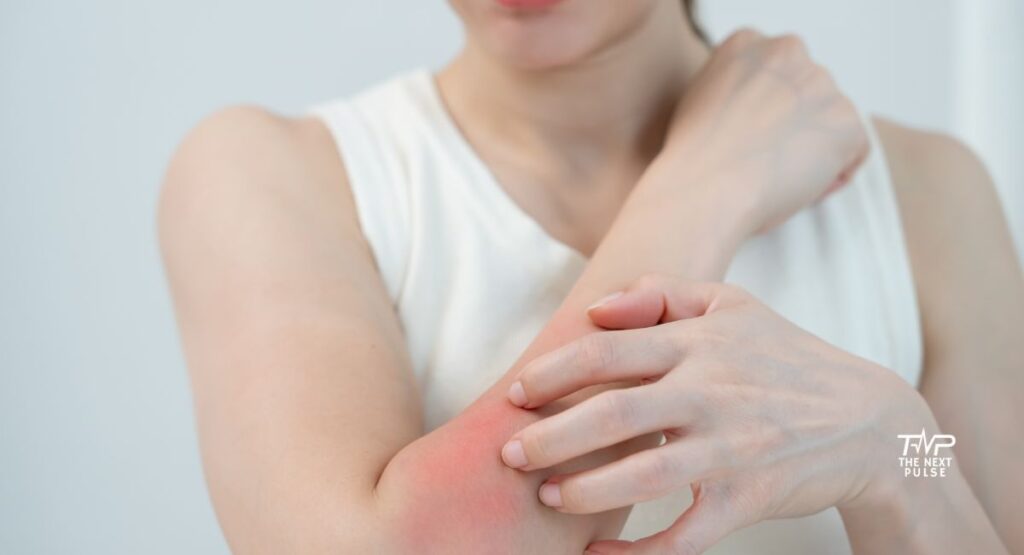
What Is Itchy and Rash-Prone Skin?
Itchy, rash-prone skin (also known as pruritus with dermatitis) refers to skin that becomes irritated, inflamed, and uncomfortable due to internal or external triggers. These rashes can be acute (short-term) or chronic and vary in severity.
How It Looks and Feels
- Color: Red, pink, or darkened patches (depending on skin tone)
- Texture: Bumpy, dry, flaky, or slightly raised
- Symptoms: Persistent itching, tightness, stinging, or burning
- Common Sites: Hands, arms, neck, legs, eyelids, and body folds
What Causes Itchy Rashes?
Here are the most common dermatologically recognized causes of itchy, rash-prone skin:
| Trigger | Description |
| Dry Skin (Xerosis) | Lacks moisture and becomes tight, flaky, and itchy |
| Contact Dermatitis | Allergic or irritant reactions to products like soaps, metals, or plants |
| Eczema (Atopic Dermatitis) | Chronic condition causing dry, inflamed, itchy skin—often genetic |
| Heat & Sweat (Miliaria) | Trapped sweat causes red bumps or itchy rashes, especially in hot climates |
| Allergic Reactions | Triggered by food, medications, or airborne allergens like pollen or dust |
| Insect Bites | Mosquitoes, fleas, and bed bugs cause localized itchy red welts |
| Stress | Can trigger flare-ups or worsen existing rashes via hormonal imbalance |
| Harsh Fabrics | Wool, polyester, or tight clothing can irritate sensitive skin |
👉 Related: Why Stress Worsens Your Skin & How to Fix It
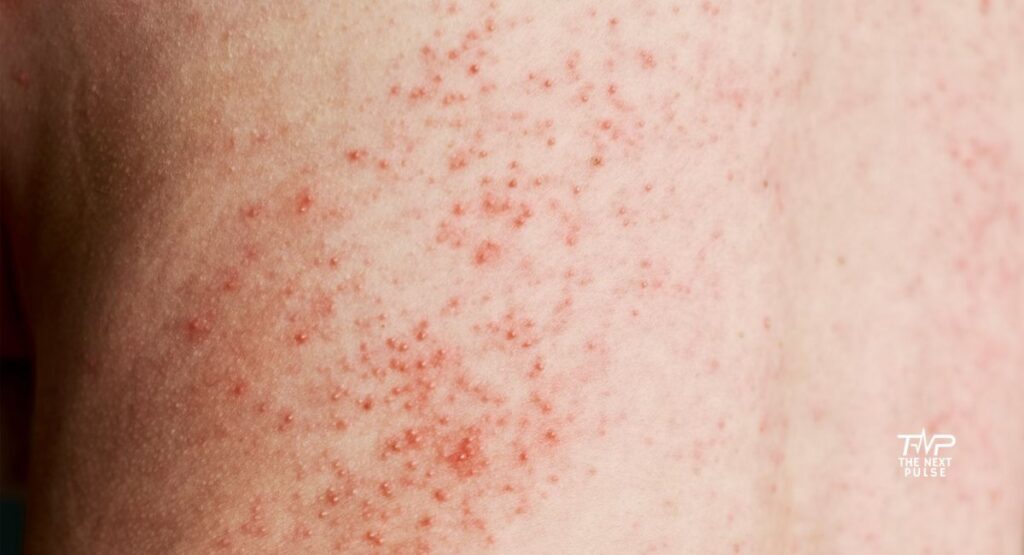
Dermatologist-Approved Medical Treatments
If your rash is severe or unresponsive to home remedies, these dermatologist-recommended treatments may help:
Topical Treatments
- 1% Hydrocortisone Cream (OTC):
Reduces itching and inflammation for allergic reactions or eczema.
✅ Best for: localized flare-ups
⚠️ Limit use to 7–10 days to avoid skin thinning - Prescription Steroids (Clobetasol, Triamcinolone):
Stronger options for stubborn or widespread rashes.
🔒 Requires dermatologist guidance - Calcineurin Inhibitors (Tacrolimus, Pimecrolimus):
Non-steroidal creams for sensitive areas (e.g., face, eyelids). - Oral Antihistamines (Loratadine, Cetirizine):
Blocks itch-inducing histamines. Useful for allergic or stress-related rashes. American Academy of Dermatology – Itchy Skin Guide
When to See a Dermatologist
- Rash persists >1 week
- Symptoms worsen or spread
- You experience blisters, pus, or fever
- Over-the-counter options fail
Home Remedies to Soothe Itchy And Rash-Prone Skin
Here are science-backed natural solutions you can use at home:
1. Cold Compress
How to Use: Wrap ice in a clean towel and apply to the itchy area for 10–15 minutes.
Why It Works: Reduces inflammation and numbs itch.
Relief Time: Immediate
2. Colloidal Oatmeal Bath
How to Use: Add 1 cup of oatmeal to lukewarm bathwater. Soak for 15–20 minutes.
Why It Works: Contains anti-inflammatory avenanthramides to soothe skin.
Relief Time: Within 1–2 uses
3. Aloe Vera Gel
How to Use: Apply fresh gel from the leaf or pure store-bought aloe to rash.
Why It Works: Hydrates and cools the skin while aiding repair.
Relief Time: 2–3 days
4. Coconut Oil
How to Use: Apply thinly on clean skin at night.
Why It Works: Antimicrobial, moisturizing, and helps rebuild skin barrier.
Relief Time: 3–5 days
5. Apple Cider Vinegar (Diluted)
How to Use: Mix 1 tbsp ACV with 1 cup water. Dab with a cotton ball.
Why It Works: Balances skin pH and fights bacterial overgrowth.
Relief Time: 2–4 days (Avoid if skin is broken or raw)
⚠️ Always patch-test natural remedies to avoid irritation or allergic reactions.
Prevention Tips for Long-Term Relief
Smart Skincare Habits
- Use fragrance-free, hypoallergenic cleansers
- Apply moisturizer immediately after bathing
- Avoid over-scrubbing or using hot water
- Change your skincare seasonally—heavier in winter, lighter in summer
Lifestyle Adjustments
- Drink more water: Skin thrives on hydration
- Manage stress: Mindfulness, exercise, or breathing techniques
- Choose soft fabrics: Cotton, bamboo over wool or synthetics
- Wash clothes in mild detergents: No dyes or fragrances
💡 Pro Tip from a Dermatologist:
“If your skin is itchy at night, consider applying a thick barrier cream before bed and running a humidifier in your room. Dry indoor air can quietly sabotage your skin overnight.”
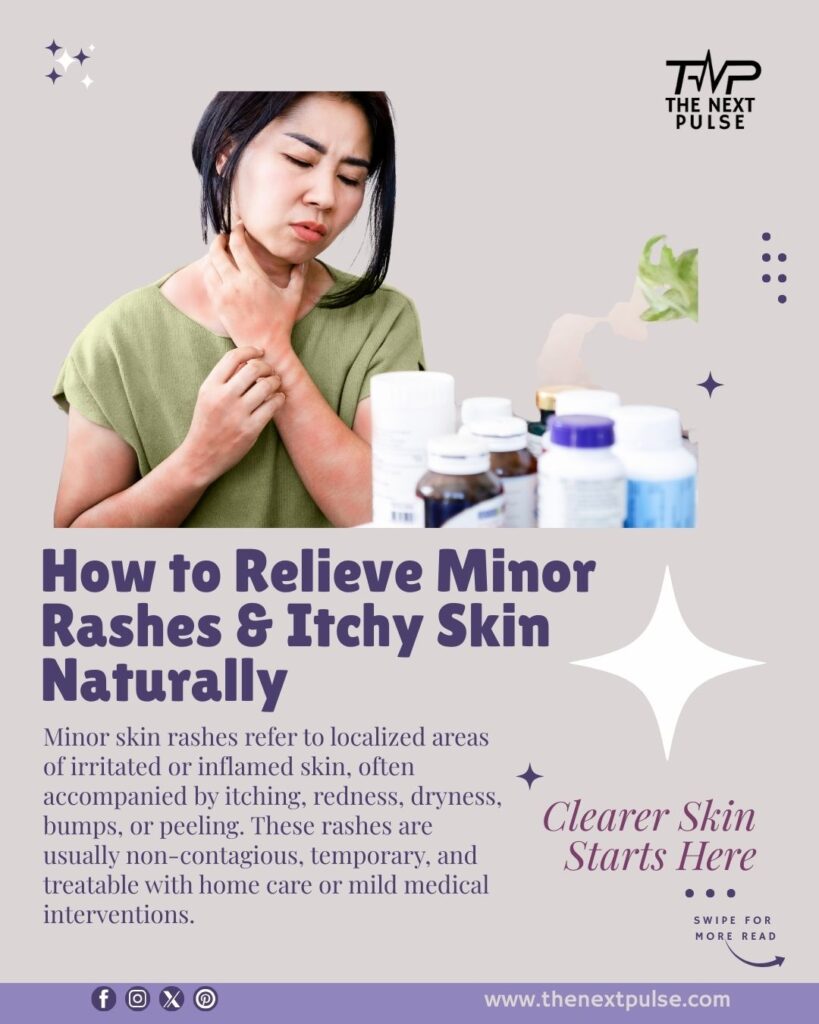
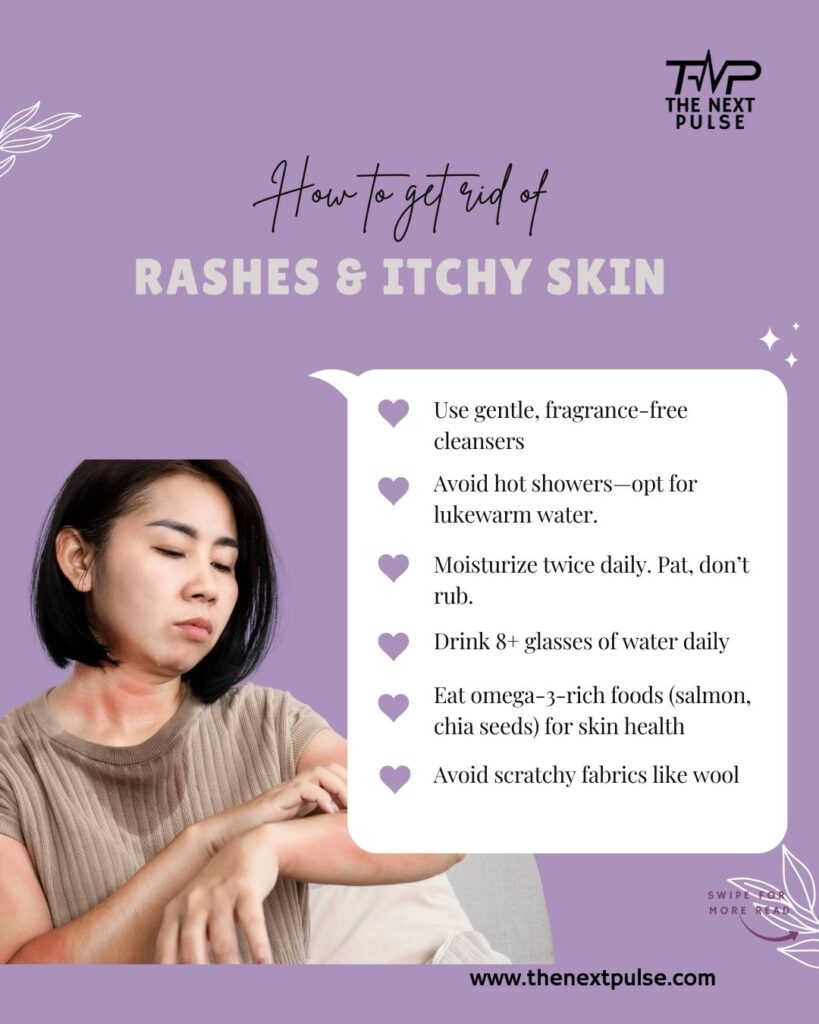
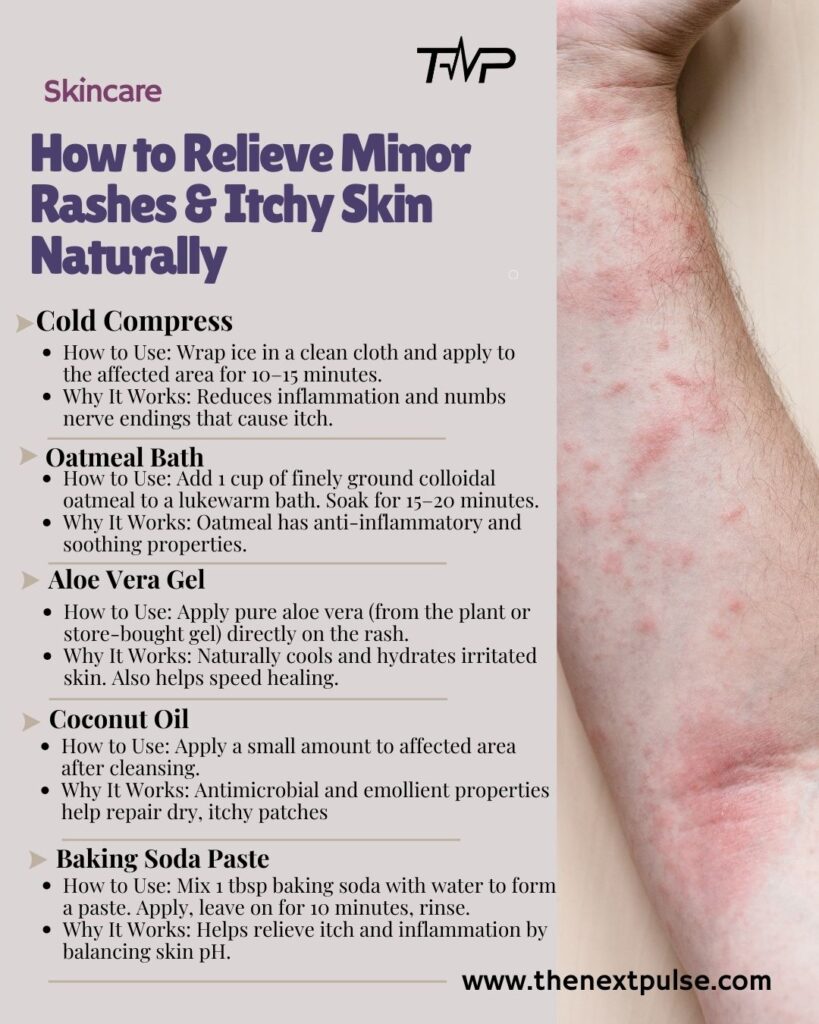
FAQs
1. Can stress cause itchy skin even without a rash?
Yes. Stress-induced itching is real and can occur without visible inflammation due to heightened nerve sensitivity.
2. Is itchy skin always a sign of allergy?
Not always. It could be from dryness, heat, irritation, or internal health issues. An allergy is just one of many causes.
3. How long should a mild rash last?
Most minor rashes resolve within 3–7 days with proper care. If not, consult a doctor.
4. Should I use moisturizer on an active rash?
Yes—but use a gentle, unscented moisturizer to avoid further irritation. Look for ceramides and colloidal oatmeal.
5. What foods help prevent itchy skin?
Anti-inflammatory foods like omega-3-rich salmon, walnuts, flaxseeds, and leafy greens can support healthy skin.
Final Thoughts: Take Control of Your Skin Health
Itchy, rash-prone skin may feel like a never-ending battle, but with the right care, relief is within reach. By identifying triggers, using dermatologist-recommended treatments, and adopting preventive habits, you can regain comfort, restore confidence, and enjoy smoother, healthier skin.
If your symptoms persist or worsen, always seek personalized guidance from a board-certified dermatologist.
